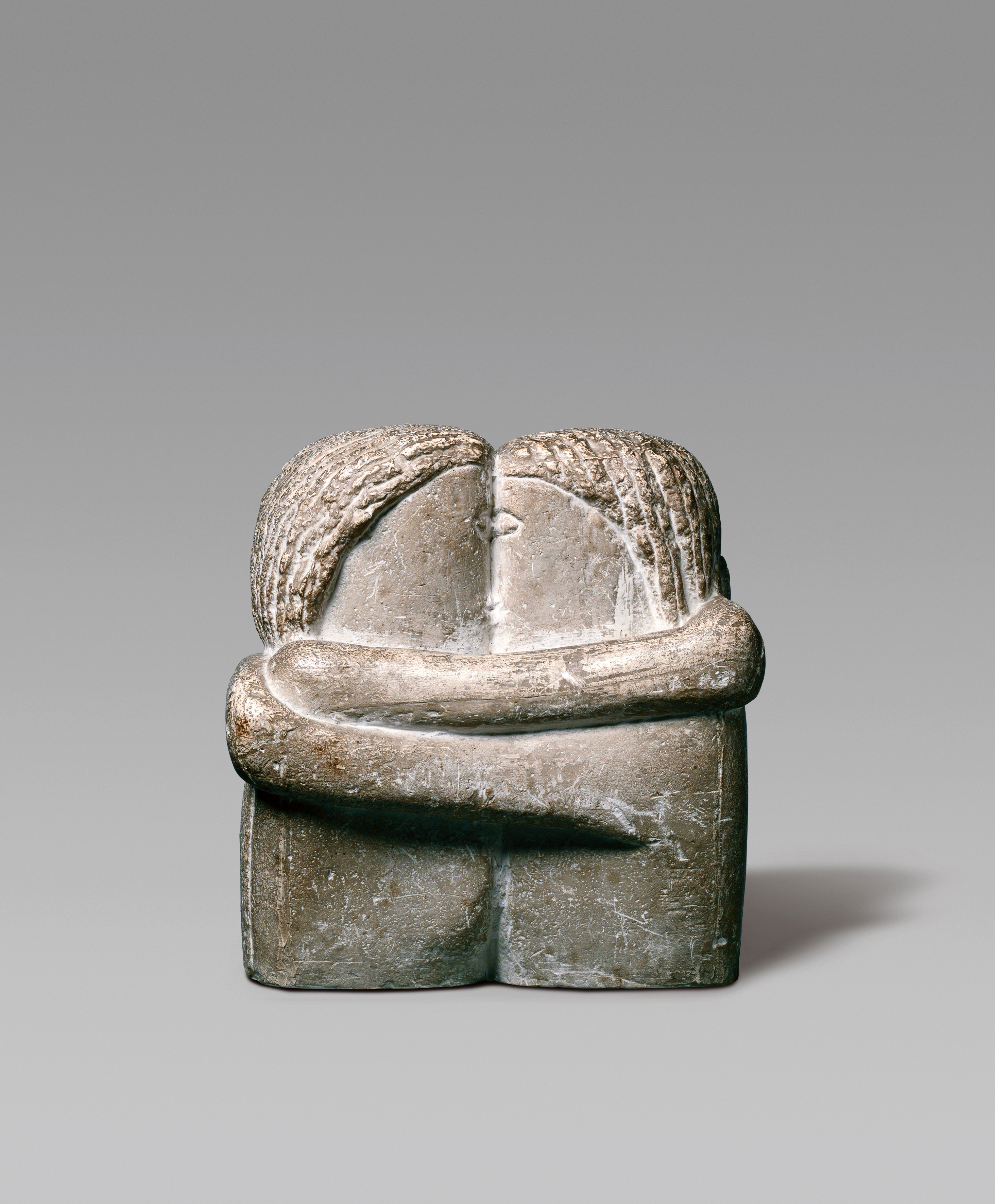Brancusi and Serra come together in Basel

Two of the greats of modern sculpture - Constantin Brancusi and Richard Serra – are sharing floorspace at the Fondation Beyeler near the northern city of Basel.
The sober presentation reinforces the sense of space created by the pieces.
“Fernando Pessoa” the name of a Portuguese writer and the title of one of Serra’s works, is on show for only the second time after being exhibited in London.
This majestic wall, which is nine metres long and weighs 40 tons, opens the exhibition likely to be one of the highlights of Swiss museums this year and which is dedicated to Brancusi (1876-1957) and Serra, born in 1939.
The foundation had begun to prepare the exhibition with only Brancusi in mind but “the visual necessity to link it with Serra was obvious”, explained curator Oliver Wick.
He added that the idea was not to create “ideal couples” of works separated by decades and thousands of kilometres, but to establish a dialogue between two major figures of modern sculpture, driven in different ways to create space for their works.
Challenges
Given that the works of Brancusi are very fragile and concentrated in a handful of collections, the fact the foundation has managed to secure 40 of the Romanian’s works is a great achievement. It’s the first retrospective of the artist in Switzerland.
As for the ten sculptures of Serra, their size (and not their “monumentality” which is a term he disputes) gave the museum transportation and architectural headaches in getting them to the museum.
It is also the most expensive exhibition that the foundation has ever put on, according to the foundation’s director Sam Keller.
When Serra met Brancusi during a year’s stay in Paris (1964/1965) he did not know he would become a sculptor. “Without Brancusi, I would never have become one,” he said at the opening of the Basel exhibition.
Influence
He was leaning more towards painting but going to Brancusi’s atelier every day changed his mind.
Brancusi’s work remained representational but he “touched on” abstract art, according to Serra. The group of works shown in Riehen illustrate this well.
Whether in The Kiss series, or even more the Negress, The Head of a Child, the Muses, the Torsos of Young Women or Princess X, which caused a scandal, Brancusi reduced his outlines to extreme simplicity. Each time he tested different materials – polished marble, stone, wood and bronze to vary their effects.
Brancusi “creates a presence which operates like a centre of energy”, explained Wick. Serra, with his large works, forces the spectator to look around his sculptures, to get closer or move away to appreciate the effect they have.
Serra, who talks of “sculptures on a grand scale” for his own works, explained that “Brancusi was pivotal at a certain time in my life”. But their ties were broken, he says, when Brancusi’s passion for marble became “fetishist”.
“Space”
“Space is the material, the substance with which I work,” Serra said, before adding that “what we see in art is what we lack”. The sculptures bring dynamism to the area around them, whether inside the Fondation Beyeler or outside it in several parts of Basel.
The two collections of works could be seen as separate retrospectives but the Fondation Beyeler’s decision to create an open dialogue in rooms that are not crammed means the links between the two artists are evident but not forced.
Speaking of the Torso of the Young Woman I, Serra says: “If someone were to create a really perfect outline, ideally balanced, a form and a body in relation with my own that constitute a sign and a symbol, there you have it. There is nothing superfluous with Brancusi, nothing at all.”
In this sense, Serra goes further than Brancusi, who inspired him. His works create a physical perception of space for whoever looks at them. This is particularly the case with his work, Delineator, which includes two steel plates of the same size, one on the floor and one on the ceiling.
The dialogue between Constantin Brancusi (born in Romania in 1876 and who died in Paris in 1957) and Richard Serra, who was born in 1939 in San Francisco, is not a world first. In 2005, the Saint Louis Foundation for the Arts had already imagined “Brancusi and Serra in Dialogue”.
The exhibition at the Beyeler Foundation can be seen both as a retrospective of Brancusi and as a retrospective of Serra. In both cases, it is the first of its kind for Switzerland. Key works of both artists are on exhibition.
The “Constantin Brancusi and Richard Serra” exhibition at the Fondation Beyeler runs until August 21, 2011. It comprises about 40 Brancusi sculptures, such as The Kiss, the Endless Column and the Birds in Space, alongside ten pieces by Serra , including such major works as the Belts, House of Cards and Strike. The loans for the exhibition come from renowned private collections and distinguished museums.
After Riehen, the exhibition will be shown in a different form at the Guggenheim Museum in Bilbao (October 8, 2011 – April 15, 2012).
(Adapted from French by Robert Brookes)

In compliance with the JTI standards
More: SWI swissinfo.ch certified by the Journalism Trust Initiative





You can find an overview of ongoing debates with our journalists here. Please join us!
If you want to start a conversation about a topic raised in this article or want to report factual errors, email us at english@swissinfo.ch.